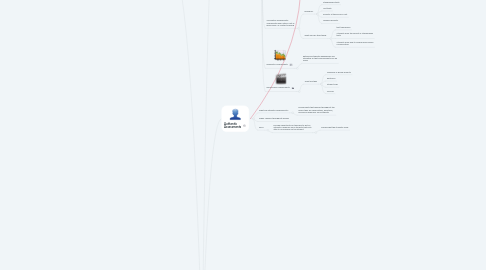
1. Authentic Assessments
1.1. What are authentic assessments?
1.1.1. Assessments that happen throughout the lesson they are observations, questions, nonverbal responses from students
1.2. When: happen throughout lessons
1.3. why?
1.3.1. provide oppertunity for teachers to get an authentic response from students that puts little to no pressure on the student
1.3.1.1. shows what the students know
2. What is Assessment
2.1. gathering of information
2.2. analyzes and uses data
2.3. helps teachers make decisions about student learning and teacher instruction
3. How are Assessments beneficial to teachers and students?
3.1. Provide for adjusting of instruction
3.2. allow for intervention
3.3. helps teachers to reflect on teaching practices
3.4. help students monitor their learning
3.5. guides instruction
3.6. allows for teachers to differentiate instruction based on individual students needs
4. Question Types
4.1. True/false
4.2. multiple choice
4.3. matching/sequencing
4.4. factual/ short answer
4.5. higher-order short answer
4.6. short or long answer
4.7. reliability/validity
5. Delivery Methods
5.1. Paper and Pencil
5.2. online
5.3. computer adaptive assessments
6. Scoring Types
6.1. human grading
6.2. distributed scoring
6.3. automated scoring
6.4. rubric
6.5. checklists
7. Five types of Assessment
7.1. Interim Assessments
7.1.1. Purpose: adjust instruction, report cards, and district reports
7.1.2. timeline and frequency : pre determined point of time
7.1.3. gradng: necessary
7.1.4. opportunity to improve student learning: medium to high depending on how the teacher implements the assessment
7.2. Formative Assessments
7.2.1. Types
7.2.1.1. Formal assessments: Planned activities, structured.
7.2.1.1.1. Kahoots
7.2.1.1.2. homeowrk
7.2.1.1.3. in class activities
7.2.1.1.4. quiziz
7.2.1.1.5. smart lab
7.2.1.2. Informal Assessments: gathering information about the students based on observation and listening.
7.2.1.2.1. Examples:
7.2.2. Formative Assessment Cycle
7.2.2.1. 1. Gather Evidence
7.2.2.2. 2. Evaluate evidence
7.2.2.3. 3. feedback
7.2.3. Definition: process of gathering information about student learning. Feedback from students is used to monitor instruction and adjust lessons throughout the process.
7.2.4. Characteristics:
7.2.4.1. Evidence of student learning
7.2.4.2. Structure
7.2.4.3. participants involved feedback
7.2.4.4. lesson adjustments
7.2.4.5. teacher to student interaction
7.2.4.6. attribution for success
7.2.5. Effective Feedback
7.2.5.1. relates performance to standards
7.2.5.2. relates performance to strategies
7.2.5.3. indicates progress
7.2.5.4. indicates corrective action
7.2.5.5. specific
7.2.5.6. focuses on errors
7.2.5.7. focuses on effort attributions
7.2.6. Mastery learning
7.2.6.1. Instructional adjustments
7.2.6.1.1. further reading
7.2.6.1.2. individual tutoring
7.2.6.1.3. group work (small group/whole class)
7.2.6.1.4. questioning
7.2.6.1.5. work sheets
7.2.6.1.6. peer tutoring
7.2.6.1.7. clarifying criteria
7.2.6.1.8. modeling
7.2.6.1.9. changing sequence
7.2.7. Purpose: adjust instruction and provide students with feedback
7.2.8. opportunity to improve student learning: high
7.2.9. grading: optional
7.2.10. Timeline and Frequency: often and frequent throughout the learning cycle
7.3. Summative Assessments: Assesments given after a unit or large chunk of content learning
7.3.1. Examples:
7.3.1.1. Standardized tests
7.3.1.2. Unit tests
7.3.1.3. Projects at the end of a unit
7.3.1.4. research projects
7.3.2. What skills do they teach:
7.3.2.1. test taking skills
7.3.2.2. Students learn the format of standardized tests
7.3.2.3. Students learn how to review large chunks of information
7.4. Diagnostic Assessments
7.4.1. determine students weaknesses and strengths so that improvements can be made
7.5. Performance Assessments
7.5.1. What are they
7.5.1.1. Individual or group projects
7.5.1.2. portfolios
7.5.1.3. student logs
7.5.1.4. journals
